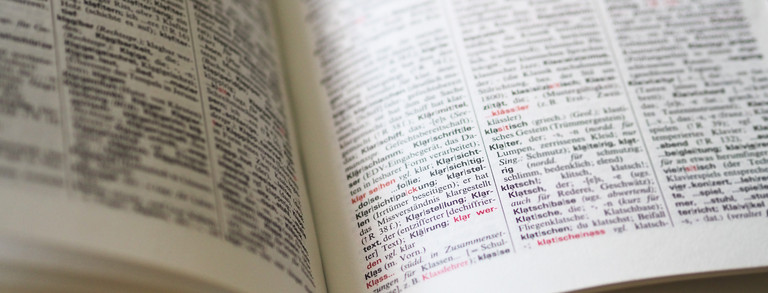Femme, the | femme (adj.)
Femme, the | femme (adj.)
Femme is a (self-)description used by mostly lesbian or queer people who express their gender identity in a more feminine way.
Femme is a (self-)description used by mostly lesbian or queer people who express their gender identity in a more feminine way.
Femme originally comes from French and means "woman." The term probably established itself in the US-American subculture in the 1940s, when it was permissible for women to visit bars without a male escort (Levitt et al. 2003). Initially, the term was used to refer to lesbian women who expressed their gender presentation in a more "feminine" way. Femmes often dressed according to heteronormative expectations of women, wearing, for example, high heels, dresses, or skirts. They were seen as counterparts to the butch, who tended to have a more masculine gender presentation.
By the 1950s, butch-femme couples were very common in the lesbian subculture (Goldberg, 2016). In the context of "second-wave feminism," a shift in butch-femme dynamics emerged in the late 1960s and 1970s. Lesbian activists criticized that lesbian couples were being expected to copy heterosexual couples (Theophano 2004). The lesbian movement contradicted the image that a relationship needed a "feminine" and "masculine" part.
Femmes were accused of internalizing patriarchal structures and adopting heteronormative stereotypes in order to be perceived as heterosexual and thus experience less homophobic discrimination. In contrast, femmes argued that they defied expectations of lesbian women by being consciously feminine. (Theophano 2004)
In the 1980s and 1990s, the terms femme and butch were redefined in the context of "third-wave feminism." They served less as a binary classification of lesbian women and more as a self-designation and expression of identity (Levitt et al. 2003). Femme is no longer an exclusive term for lesbian women but is being used as a self-designation by people regardless of their gender identity or sexuality. In the 1990s, the term "high femme" came into use additionally. This describes a gender presentation that is exaggeratedly feminine (Goldberg 2016). At the same time, femme was also used as a description by others for gay men appearing feminine who were devalued in the gay community (Them 2018).
The misogynistic evaluation of femininity is countered by femmes. Their queer femininity is self-determined and not a fulfillment of patriarchal norms of "womanhood." Femme also means a reappropriation of femininity and playing with gender roles and expectations (Tepest 2019). Questioning binary gender roles allows for a freer expression of gender identities outside and inside queer spaces.
Quellen
-
Goldberg, Abbie E. (2016): The SAGE encyclopedia of LGBTQ studies. SAGE publications.
-
Levitt, Heidi M.; Gerrish, Elisabeth A.; Hiestand, Katherine R. (2003): "The misunderstood gender: A model of modern femme identity." Sex Roles 48.3, 99-113.
-
Them (2018): Munroe Bergdorf Explains the History of the Word ‘Femme’. Letzter Zugriff: 07.06.2022.
-
Tepest, Eva (2019): "Sichtbarkeit von queeren Femmes. Die subversive Kraft des Lippenstiftes." Der Tagesspiegel, 26.07.2019. Letzter Zugriff: 07.06.2022.
-
Theophano, Teresa (2004): Butch-Femme. Letzter Zugriff: 07.06.2022.
Das Glossar soll sich im gegenseitigen Austausch mit Leser*innen weiterentwickeln.
Wir stellen regelmäßig unter dem #klargestellt die Definition eines Begriffs zur Diskussion. Sie haben Fragen oder Anregungen? Diskutieren Sie mit und tragen Sie zu einem besseren Verständnis der Begriffe bei! Wir freuen uns über Ihre Rückmeldungen an: shk.gleichstellung@verwaltung.tu-dortmund.de





